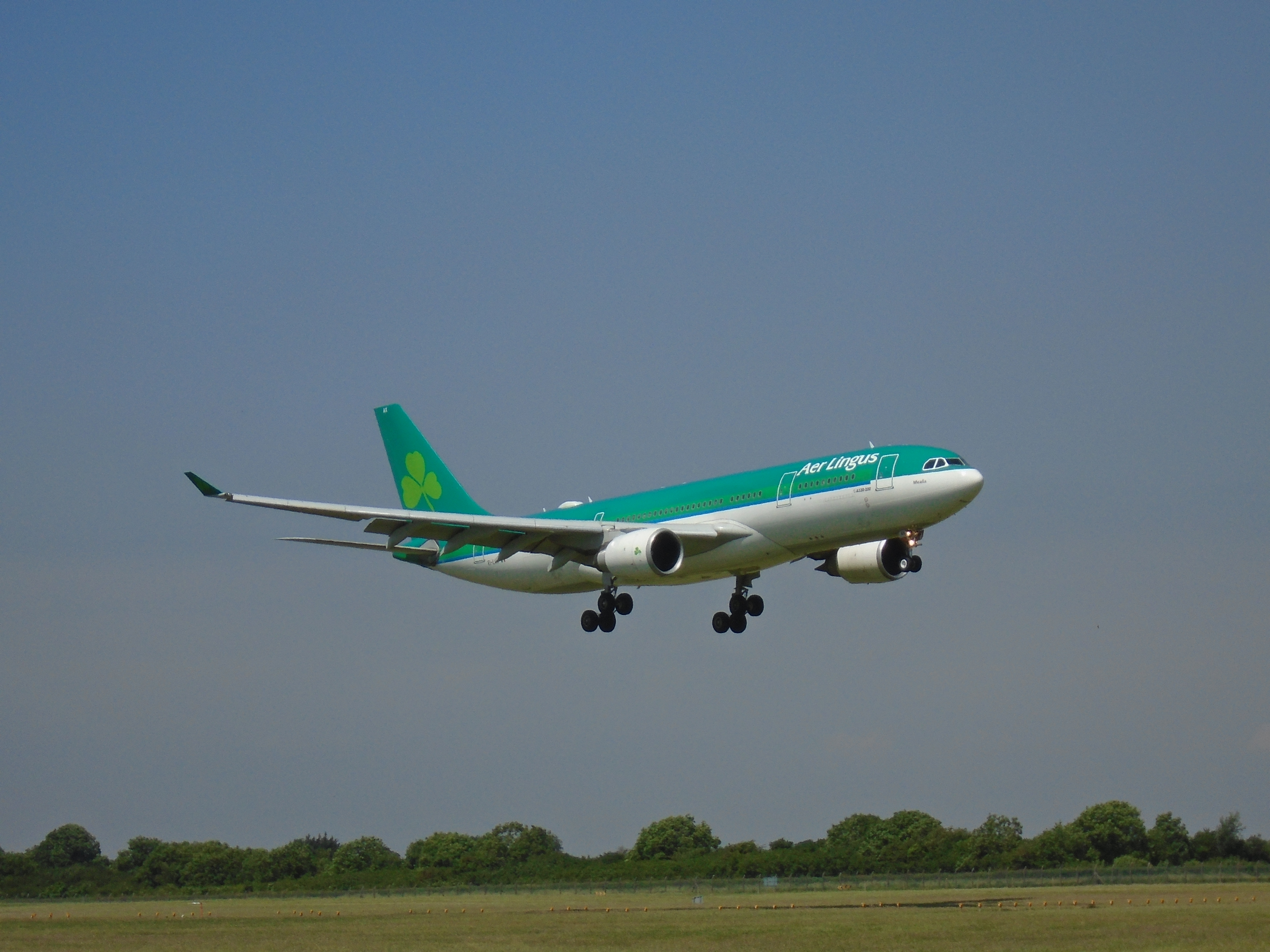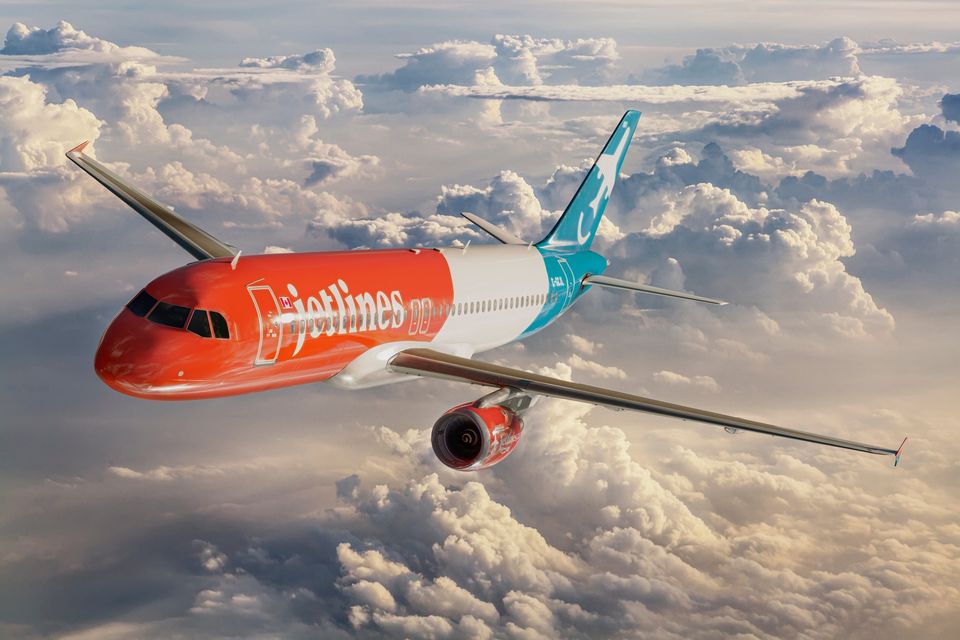




29 Oct 2025
Lease Rate Factors Under Pressure: Rethinking Valuations in a High-Interest Market
For years, aircraft leasing relied on one steady assumption: that money would stay cheap. Predictable borrowing costs allowed lessors to plan long-term, manage residual risk, and price leases with confidence. But that stability is gone.
Rising global interest rates have redrawn the financial map for aviation. What used to be a low-cost, high-yield business has become a delicate balancing act between rising funding costs, volatile demand, and changing airline priorities.
Lessors now face pressure from both sides. On one hand, higher interest rates have pushed up the cost of borrowing, reducing margins and making new acquisitions more expensive. On the other, uneven demand across aircraft types has disrupted long-held assumptions about value and depreciation. Narrow-bodies remain in short supply, while wide-bodies still lag behind recovery in many markets.
Traditional valuation models built for a stable-rate world are struggling to keep up. Discounted cash flow methods, fixed lease rate factors, and long-term residual projections no longer tell the full story. The industry is learning, sometimes the hard way, that in a high-interest market, aircraft value isn’t just about metal, it's about money, timing, and flexibility.
The new challenge is clear: how can lessors protect profitability and pricing discipline when the very benchmarks they’ve used for decades are shifting beneath their feet?
What Happens to Lease Valuations When Interest Rates Rise?
Interest rates don’t just shape financing; they define the entire leasing ecosystem. When the cost of money goes up, every assumption behind an aircraft’s value begins to shift.
Higher Borrowing Costs Change the Economics
Lessors rely heavily on debt to finance aircraft purchases. As interest rates rise, that debt becomes more expensive. The same aircraft that cost $60 million to finance a year ago now demands higher monthly repayments, tightening margins and forcing lessors to raise lease rates just to maintain profitability.
For airlines, this means leasing becomes more expensive at a time when fuel, labour, and maintenance costs are already climbing. The result is a delicate balance: if lease rates rise too much, demand drops; if they don’t, lessor returns suffer.
Valuations Decline as Discount Rates Increase
Most aircraft valuations are calculated using discounted cash flow (DCF) models which estimate the present value of future lease payments and the eventual resale value of the aircraft. In a high-interest environment, the discount rate rises, and the present value of those future payments falls.
Simply put, the same jet produces the same revenue stream but it’s worth less today.
That shift ripples through portfolios, lowering book values and forcing investors to reassess their return targets.
Equity Returns Come Under Pressure
For lessors who depend on a mix of debt and equity, rising interest costs squeeze returns on both fronts. With higher financing expenses and lower asset valuations, internal rates of return (IRR) shrink. To protect performance metrics, some lessors are tightening deal criteria, seeking stronger credit profiles, or demanding higher lease rates.
Residual Value Assumptions Get Riskier
One way to offset today’s higher rates is to assume tomorrow’s aircraft will be worth more but that’s a gamble. Overly optimistic residual value forecasts can mask the true cost of capital. If future demand softens or technology shifts faster than expected, those optimistic assumptions can turn into real losses.
In short, when interest rates rise, lessors pay more to buy, earn less from holding, and face greater uncertainty when selling. What was once a stable, yield-driven business now requires sharper valuation models and stronger financial discipline.
How Do High Interest Rates Affect Returns and Investment Strategy?
For lessors, rising interest rates don’t just change the numbers they change the playbook. What used to be a straightforward yield business now demands far more strategic agility, tighter capital management, and a rethinking of what “value” really means.
Shrinking Margins and Compressed Returns
Aircraft leasing has traditionally offered predictable returns. But in a high-rate environment, that predictability fades fast. As borrowing costs rise, the spread between the cost of capital and lease income narrows. Even small movements in interest rates 50 or 100 basis points can significantly erode margins on long-term leases.
To compensate, lessors are adjusting their pricing strategies. Some are increasing lease rate factors (LRFs) to reflect the new cost of funding. Others are demanding higher upfront payments or shorter lease durations to reduce exposure. But every adjustment comes with a trade-off: higher rates can strain airline customers already battling inflation and fuel volatility.
Stronger Credit Screening and Selective Investments
Higher rates also mean higher stakes. With capital more expensive, lessors are becoming more selective about where they deploy it. Airlines with weaker credit profiles or inconsistent cash flows may find it harder to secure competitive lease terms. Deals that once made sense in a low-interest world now fail to meet return thresholds.
This shift is leading to a flight toward quality both in counterparties and in asset types. Well-capitalised airlines operating newer, fuel-efficient fleets are attracting more favourable terms, while older aircraft or riskier lessees face rising costs or tighter conditions.
Residual Value Risk Becomes a Bigger Variable
In periods of high rates, some lessors try to maintain competitiveness by assuming stronger residual values expecting that aircraft will retain or even grow in worth over time. But this can be risky. Technology transitions, environmental regulation, and uneven demand recovery can all undercut those assumptions.
If the resale market weakens or interest rates stay high longer than expected, those residual projections can quickly unravel, leaving lessors with overstated asset values and underperforming returns.
Investment Strategies Are Shifting
Many lessors are rebalancing portfolios favouring assets with shorter remaining lives or those tied to high-demand regions. Some are also pursuing sale-and-leaseback transactions instead of direct purchases, reducing upfront capital exposure. Others are diversifying funding through securitisation or private placements, aiming to offset rising bank lending costs.
The takeaway is clear: higher interest rates are forcing lessors to become investors again, not just asset managers. The emphasis is moving from growth to precision, from volume to value.
How Are Shifting Demand Patterns Disrupting Traditional Assumptions?
While interest rates dominate the financial story, market demand is rewriting the operational one. Aircraft values are no longer moving in predictable cycles and that’s creating tension between economic models and real-world conditions.
A Post-Pandemic Recovery That’s Anything but Even
The aviation rebound since 2022 has been strong, but not balanced. Leisure travel surged as borders reopened, driving record utilisation for narrow-body fleets, especially those operated by low-cost carriers.
In contrast, long-haul business travel once a key profit engine for wide-body aircraft has recovered far more slowly. The result is a split market: high competition and rising lease rates for single-aisle jets, with softer demand and lower lease yields for wide-bodies.
For lessors, this divergence challenges one of leasing’s oldest assumptions that aircraft values and lease rate factors move together across fleet types. Today, performance depends far more on segment exposure and timing.
OEM Supply Constraints Are Distorting Market Balance
Production challenges at both Airbus and Boeing have turned supply scarcity into a major driver of asset value. Persistent supply chain disruptions, from engine delivery delays to component shortages, have limited the flow of new aircraft.
With fewer new deliveries available, airlines are extending leases and paying premiums for mid-life aircraft, particularly models like the A320ceo and 737-800 that still offer strong economics.
Mid-Life Aircraft Are Defying the Rulebook
Traditionally, mid-life aircraft depreciated steadily as newer models entered the market. But that assumption no longer holds. With supply tight and demand high, values for mid-life and even older aircraft have stabilised in some cases, appreciating slightly.
This has given smaller lessors a new lease on life. Those holding well-maintained mid-life assets are seeing renewed demand, while those reliant on new deliveries face delays and higher acquisition costs.
Regional and Market Dynamics Are Driving Polarisation
Demand patterns also vary sharply by geography. Fast-growing markets in Asia and the Middle East are driving narrow-body lease competition, while parts of Europe and North America are seeing slower recovery in long-haul capacity.
This uneven demand forces lessors to reassess where and how they deploy assets and to rethink valuation models built on global averages that no longer apply.
In essence, the new demand landscape rewards adaptability. The aircraft that holds its value today isn’t just fuel-efficient; it's available, reliable, and positioned in the right market at the right moment.
How Are Airline Strategies Changing in Response to Market Volatility?
When money gets expensive and markets turn unpredictable, airlines rethink how they manage their fleets. Ownership, once seen as a sign of strength, is now being replaced by flexibility. The new mindset is simple control capacity, not capital.
Operating Leases Are Becoming the Default Choice
With interest rates high and cash reserves stretched thin, airlines are leaning more heavily on operating leases instead of purchasing aircraft outright. Leasing allows them to scale fleets up or down without locking in long-term debt. It also keeps balance sheets lighter, improving financial agility when demand swings.
This shift is particularly visible among low-cost carriers, who are expanding aggressively but prefer not to tie up capital in ownership. For them, flexibility beats control and that shift is reshaping demand across the leasing sector.
Sale-and-Leaseback Deals Are Accelerating
Another consequence of tighter credit is the boom in sale-and-leaseback transactions. Airlines sell aircraft they already own to lessors, then lease them back immediately. This frees up liquidity while keeping the same capacity in the air.
For lessors, these deals offer access to relatively new aircraft without competing in crowded OEM order books. For airlines, they serve as an efficient financial tool — effectively turning parked capital into working capital.
Fleet Renewal Is Now a Strategic Balancing Act
While many airlines want to invest in new, fuel-efficient aircraft to cut costs and emissions, high financing rates and supply chain delays are forcing compromises. Some are extending leases on older jets; others are opting for short-term leases on mid-life aircraft until OEM delivery schedules stabilize.
This dual-track approach — renewing selectively while maintaining short-term flexibility is now the dominant fleet strategy across much of the industry.
Credit Strength Shapes Negotiating Power
Stronger, well-capitalised airlines continue to benefit from lower lease rate factors and better terms. Smaller or more vulnerable carriers, however, face steeper rates and stricter covenants. The spread between top-tier and lower-tier airlines has widened, mirroring the broader financial polarisation happening across the industry.
The result is a leasing landscape built on adaptability. Airlines that used to plan around ownership now plan around optionality, a shift that is changing how lessors price, structure, and manage every deal.
Why Are Smaller and Larger Lessors Experiencing the Market Differently?
The current high-interest environment hasn’t just changed how aircraft are valued, it’s changing who can compete. While the fundamentals of leasing remain the same, scale and access to capital now define who thrives and who struggles.
Big Players Hold the Advantage
Large, well-capitalised lessors especially those with global portfolios and investment-grade ratings have a clear edge. Their diversified funding sources allow them to secure financing at lower rates, often through bond markets or securitisation structures.
This financial strength means they can still place bulk orders with manufacturers at discounted rates, spreading risk across multiple assets and customers. They can also afford to wait out market fluctuations, rather than being forced to sell or reprice assets during downturns.
In other words, scale buys time and in a volatile market, time is leverage.
Smaller Lessors Face Tighter Margins
For mid-tier or independent lessors, the pressure is much higher. Their borrowing costs rise faster, and their deals are often more sensitive to short-term market changes. With limited access to cheap capital, smaller players sometimes have to take on higher-risk lessees or older aircraft to stay competitive, a strategy that can pay off when demand is strong, but backfires when markets cool.
These lessors also face greater exposure to residual value uncertainty. Unlike large firms with deep analytics and diversified portfolios, smaller companies often depend on fewer assets and narrower customer bases, making them more vulnerable to lease defaults or sudden value swings.
Market Polarisation Is Deepening
This gap between large and small lessors is widening. Big players are consolidating their position through mergers, acquisitions, and strategic partnerships, while smaller firms are being absorbed or forced to pivot toward niche markets such as cargo conversions, mid-life asset trading, or regional aircraft leasing.
For the industry, this polarisation isn’t necessarily unhealthy. It’s creating a more tiered ecosystem: large firms anchor market stability, while smaller, agile players continue to serve flexible, short-term, and regional demand segments.
Adaptation Will Define Survival
In essence, high interest rates are reshaping competition itself. Size and capital strength matter more than ever but so does agility. The lessors that thrive will be the ones who can balance both: managing capital efficiently while staying nimble enough to seize short-term opportunities others can’t.
How Are Valuation Models Evolving to Reflect the New Market Reality?
For decades, aircraft valuation models relied on relatively stable assumptions, predictable demand cycles, steady interest rates, and a consistent relationship between lease rate factors and asset values. That stability has vanished. The volatility of recent years has forced lessors, investors, and appraisers to rethink how they assess aircraft worth.
Traditional Models Are No Longer Enough
The standard approach using Discounted Cash Flow (DCF) models and static lease rate factors assumes a level of market predictability that simply doesn’t exist right now. Rising financing costs, unpredictable delivery schedules, and region-specific demand surges have broken the link between theoretical and actual market behaviour.
Many lessors are finding that historic data now tells only half the story. Lease rate factors once tied neatly to asset age and type now vary dramatically based on region, fuel efficiency, and the operator’s credit profile.
Holistic Risk Assessment Is Becoming the New Standard
Modern valuation now requires a broader view of risk, one that blends financial, operational, and macroeconomic variables. Factors like interest rate volatility, supply chain fragility, and ESG compliance are now integrated into valuation models.
For example, a narrow-body aircraft operating in Asia with strong utilisation may be worth more than an identical aircraft in a slower European market, even if both are the same age and model. Geographic resilience, not just mechanical condition, has become a key valuation input.
Scenario-Based Forecasting Adds Realism
To manage uncertainty, lessors and analysts increasingly use sensitivity analysis and scenario modelling. These techniques test how an aircraft’s value would change under different interest rate, demand, or maintenance cost conditions.
Rather than providing a single figure, these models offer a range reflecting the realities of a market where sentiment, regulation, and cost of capital can shift quickly. It’s a more transparent approach that acknowledges risk instead of masking it.
Technology Is Enhancing Accuracy, Not Replacing Expertise
While data analytics and AI-driven valuation tools are gaining traction, they remain complements, not substitutes, for expert judgment. Machine learning models can identify correlations in market data, but interpreting them still requires human understanding of fleet trends, regulatory context, and airline behaviour.
Ultimately, the best valuations now combine data-driven precision with industry intuition ensuring that asset pricing reflects both the numbers and the narrative.
In this recalibrated environment, valuation isn’t just about forecasting numbers on a spreadsheet. It’s about understanding the interplay between capital, confidence, and capability, the three forces that now define aircraft value.
What Strategic Adjustments Are Lessors Making to Protect Returns?
As financing costs rise and valuations fluctuate, lessors are re-engineering their strategies to safeguard profitability. The focus has shifted from rapid portfolio growth to disciplined capital deployment, diversified funding, and smarter asset management.
Diversifying Funding Sources to Offset Cost Pressure
Traditional debt and bank loans have become more expensive, pushing lessors to explore alternative financing options. Many are turning to asset-backed securitisation (ABS), private credit, and green finance instruments to reduce dependency on costly loans.
Securitisation, in particular, has regained importance allowing lessors to pool aircraft assets and tap capital markets for lower-cost funding. Meanwhile, sustainability-linked bonds are attracting investors seeking exposure to aviation assets aligned with ESG standards, giving lessors a new competitive edge.
Focusing on Next-Generation, Fuel-Efficient Fleets
With fuel prices high and environmental regulations tightening, lessors are prioritising new-technology aircraft such as the A320neo, 737 MAX, and A350. These aircraft retain higher residual value and stronger demand resilience, especially among airlines looking to cut operating costs and meet emission targets.
By contrast, older models now face steeper depreciation curves. Many lessors are either phasing them out or redeploying them to cargo and regional markets where they can still generate stable returns.
Extending Lease Terms and Building Flexibility
In uncertain times, predictable cash flow is king. Lessors are increasingly negotiating longer lease terms or adding built-in renewal and escalation clauses to secure stable income. Others are introducing variable lease rate structures, tied to interest rate movements or utilisation levels, ensuring returns remain viable even if market conditions shift.
Flexibility has also become a valuable bargaining chip. Agreements that allow engine swaps, mid-lease modifications, or early return options give both parties room to adapt without eroding value.
Tightening Risk Management and Asset Surveillance
To protect against airline default risk, lessors are doubling down on credit monitoring and technical oversight. Continuous asset surveillance supported by digital records and real-time maintenance data ensures aircraft retain full value even during extended lease terms.
The best-performing lessors treat asset management not as a cost centre, but as a profit protector. By proactively monitoring aircraft health and lessee performance, they reduce reconfiguration costs and downtime between leases.
Collaborating with Airlines for Mutual Resilience
Finally, lessors are recognising that stability is a shared goal. Rather than imposing rigid terms, many now engage airlines as long-term partners offering short-term relief or renegotiated terms when necessary. These relationships not only preserve trust but also improve aircraft utilisation and reduce repositioning losses over time.
The message is clear: success in a high-interest market depends less on growth and more on resilience by design. The lessors that adapt their funding, fleets, and relationships in sync with market realities will continue to generate steady returns even as traditional assumptions fade.
What Lies Ahead for Lease Rate Factors and Valuations?
The leasing market is entering a new equilibrium one defined by persistent high interest rates, supply constraints, and selective demand. While the short-term outlook remains uneven, the long-term direction is clearer: lease rate factors (LRFs) will stabilize at higher levels than the pre-pandemic norm, and valuations will increasingly reflect operational efficiency, not just asset age.
Lease Rate Factors Will Stay Elevated
Higher borrowing costs are unlikely to reverse quickly. Even if central banks ease monetary policy, lessors are expected to price leases more conservatively to rebuild margins eroded during years of cheap financing. LRFs for new-generation narrow-bodies currently around 0.6% – 0.7% per month may hold firm or even rise slightly, while mid-life aircraft could see stronger relative yields as demand persists amid limited OEM production.
The age-based discount model is weakening. Airlines are now willing to pay a premium for availability, reliability, and fuel efficiency not just for newer metal. This means the LRF curve could flatten across age segments, reflecting the value of “ready-to-fly” capacity rather than book age.
Valuation Resilience Will Depend on Efficiency and ESG Alignment
Aircraft with fuel-efficient engines, lower emissions, and proven operating economics will maintain stronger long-term values. The integration of ESG metrics into financing and leasing will further reinforce this divide, rewarding lessors who invest in modern, sustainable fleets.
Meanwhile, older aircraft, even those with solid maintenance records will depreciate faster as carbon regulation tightens and fuel costs remain volatile. Secondary market liquidity will continue, but more within niches like freighter conversions or short-haul operations.
Market Transparency Will Improve Through Data Integration
The increasing use of digital asset tracking, predictive maintenance tools, and AI-driven valuation models will bring greater transparency and accuracy to aircraft pricing. Lessors and investors will be able to benchmark performance and value in real time, narrowing the gap between book values and actual market sentiment.
That said, technology will not eliminate volatility only expose it faster. Real-time data will help lessors act swiftly, but it won’t shield them from cyclical risk.
Resilience, Not Optimism, Defines the Future
The coming years will demand a new balance: lessors must adapt to higher funding costs while maintaining competitive pricing and asset quality. Those who manage this balance using discipline rather than speculation will define the next phase of stable, sustainable growth in aircraft leasing.
In short, the industry’s valuation logic is shifting from “how old” to “how efficient.” The lessors who understand that will find opportunity even in turbulence.
Conclusion – Rethinking Value in an Era of Volatility
Lease rate factors have always been shaped by economics, but now they’re equally defined by adaptability. High-interest markets are testing every assumption lessors once took for granted from how aircraft are financed to how they’re priced and deployed.
The lesson isn’t simply about surviving higher costs. It’s about recognising that value is no longer static. An aircraft’s worth now depends as much on its operational efficiency, ESG readiness, and contractual flexibility as on its physical condition.
For lessors, the path forward is clear: invest wisely, diversify funding, and build agility into every decision. The era of “set-and-forget” lease models is over. Success will belong to those who can respond to market shifts not by chasing trends, but by anticipating them.
FAQs
1. What is a lease rate factor in aviation leasing?
A lease rate factor (LRF) is the monthly lease payment expressed as a percentage of the aircraft’s capital cost. It helps compare lease rates across different aircraft types and values. For example, an LRF of 0.7% means a $50 million aircraft would have a monthly lease of $350,000.
2. How do rising interest rates affect aircraft valuations?
Higher interest rates increase the cost of capital for lessors, which reduces aircraft valuations when using discounted cash flow models. Essentially, future income streams are worth less when financing costs rise.
3. Why are mid-life aircraft gaining more attention?
OEM delays and strong travel recovery have boosted demand for mid-life aircraft. They offer immediate capacity at lower acquisition costs, making them attractive to airlines even as new aircraft deliveries remain slow.
4. How do lessors protect returns in a high-interest market?
Lessors diversify funding sources, extend lease terms, and focus on efficient, next-generation aircraft. They also employ dynamic lease structures that account for interest rate changes or utilisation patterns.
5. What’s the long-term outlook for lease rate factors?
Lease rate factors are expected to remain above pre-pandemic levels. The focus is shifting from aircraft age to efficiency and sustainability, meaning assets with stronger fuel performance and lower emissions will command premium rates and better valuations.




